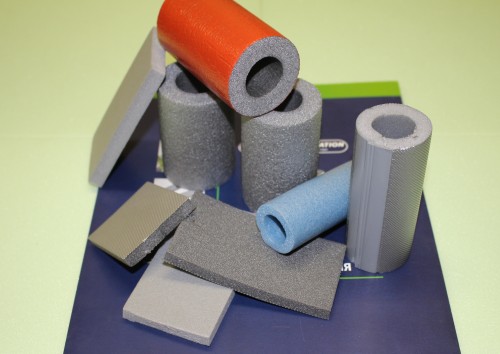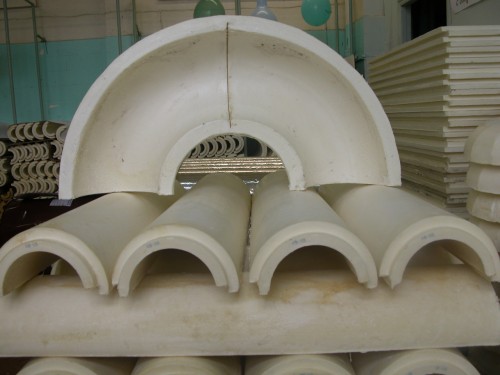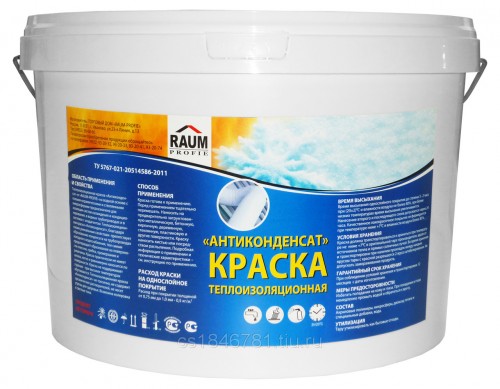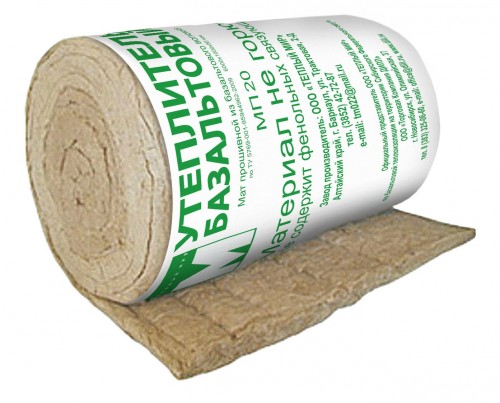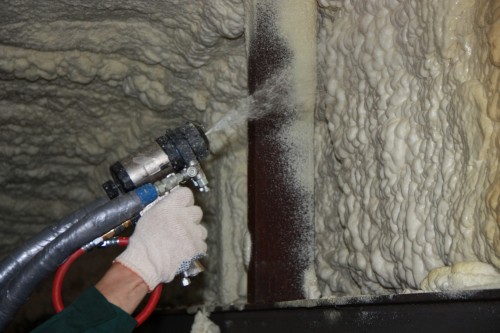
Thermal insulation of heating pipes. Selection of insulation and installation process Insulation

In the absence of thermal insulation of heating pipes along the road from the boiler room to the final radiators, heat leakage is about 4-15%. For the rational use of resources - in order to eliminate heat loss, as well as to protect the surface of pipes from external influences, the use of thermal insulation material is required. Especially relevant for pipelines laid outside the room located in unheated premises, as well as mounted in the walls. With the use of heat insulation, you can create a protective layer of the pipeline to prevent heat leakage, condensate appearance, as well as pipe freezing.
Content
Features of thermal insulation of heating pipes
For many years, for thermal insulation of heating pipes, it was used primarily glass gamble - this material is not too convenient to operate, and also has a low strength and high level of water absorption.
On the current market of thermal insulation means you can buy thermal insulation for pipes with various physico-technical characteristics, foreign and domestic production.
The selection of insulation is made on the basis of the diameter of the pipes and temperature of the coolant, as well as the consumption of operating conditions - the temperature and humidity mode, the effects of aggressive chemical media, alleged mechanical loads.
According to the diameter of the pipes, the type of the insulator is selected - it can be rigid, molded in the form of semi-cylinders and cylinders, segments, as well as in the form of soft insulation rolls (mats). The pipes of a small diameter are conveniently insulated with a formation insulation of polystyrene foam, equipped with grooves for convenient fixation - either mineral wool, as well as polymer segments. These thermal insulation materials are stable and not combustible, differ in high thermal resistance, moisture resistance, strength and precisely verified form and dimensions.
For the insulation of pipes with a diameter of more than 273 mm, it is recommended to use hydrophobized mats from mineral wool with a synthetic binder component.
Types of thermal insulation material
The following types of thermal insulation materials are distinguished: piece or rolled, as well as combined type, fill, casing.
Polyurene Foolder
Material has a very low thermal conductivity, vapor permanent and sufficiently durable. There are two options for using polyurethane foam:
- polyurethane spraying seamless pouring on the surface of the pipes. Such thermal insulation is characterized by excellent adhesion, allowing the most insulation of pipes and protect them from the negative impact of the external environment;
- the method of rigid fixation with the help of molds in the form of cylinders or thermal insulation of shell pipes - semi-cylinders, fixed on pipes using special clamps or mastic. These pressed forms of the cellular structure are manufactured by various diameters, lengths and thickness. Forming thermal insulation from polyurethane foam aesthetically looks, eliminating the appearance of the "pair effect" - i.e. Snow over the location of the heat resistant will not melt. Polyurethane foam semi-cylinders and cylinders are highly effective and convenient in domestic use, inexpensive, differ in the convenience of mounting, easy to dismantle and can be reused. It should be noted that polyurethane foam is a weak-threshable material, it is not recommended to use it as thermal insulation for pipes with a temperature above 100 ° C.
Heat insulation paint
It is made on aqueous or acrylic basis, it contains a variety of fillers in the form of perlite, foam glass, fiberglass, and ceramic micrographs. The paint layer in several millimeters successfully replaces the traditional insulation. The paint resembles a thick paste consistency, lies with a thick layer, convenient for use. Plus, the warmlook is that it evenly covers the entire surface, including embossed and hard-to-reach places, performs protective functions for the stained product.
The benefits of thermal insulation paint also include:
- low thermal conductivity;
- heat resistance, resistance to atmospheric precipitation, mechanical damage;
- moisture resistance and corrosion resistance;
- resistance to ultraviolet rays;
- high level of adhesion;
- fire safety;
- durability - the service life reaches several decades.
Accordingly, the physico-technical characteristics, this thermal insulation for pipes, the price is justified by the high quality of the material.
Mineral wool
This material produces two types:
- stone - fiber minerals of basalt group, is made of silicate melts of rocks or domain slags. This material is characterized by moisture resistance, not toxic and non-flammable (melting point 800 ° C);
- glass - Staple fiberglass based on quartz sand, glass battle. This material is distinguished by low density, biological and chemical resistance, as well as durability. It is recommended to use as thermal insulation for overhead heating pipes.
Foamed polyethylene foam
It is made in the form of beans and two-meter tubes of verified shape with a technological cut. The thermal insulation of the power flow for pipes is a tube and rolls with a thickness of 6-20 mm. This material is characterized by moisture and wear resistance (thermal insulation service life of up to 25 years), non-combustible, resistant to atmospheric and chemical media, temperature drops - from -60 to 110 ° C. Plugs of foamed thermal insulation for pipes with foil protective coating and other materials are made.
Installation of thermal insulation of pipes
In most cases, the installation of thermal insulation of the pipes is quite realistic to produce on their own. In particular, when installing rolled, shaped or sheet materials, complex expensive equipment is not required. The following tools and materials will be required:
- brush, knife;
- scotch reinforced and foil;
- galvanized wire;
- primer anti-corrosion mix.
A primer is applied to purified from pollution and a degreased surface of pipes with a brush (plastic primer is not necessary). Next, the pipes must be wrapped on the spiral of the reinforced tape (for foil surfaces, the use of scotch is optional). The seams must be combined and fasten with wire, and then give them tightness using reinforced tape.
Cover materials are fixed on pipes using the grooves specifically provided by the manufacturer. Solid tubes of thermal insulation dressed on pipes before mounting the heating pipes, or on the installed pipeline - with cutting and subsequent sealing with a special glue.




